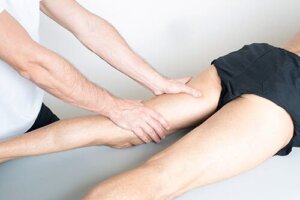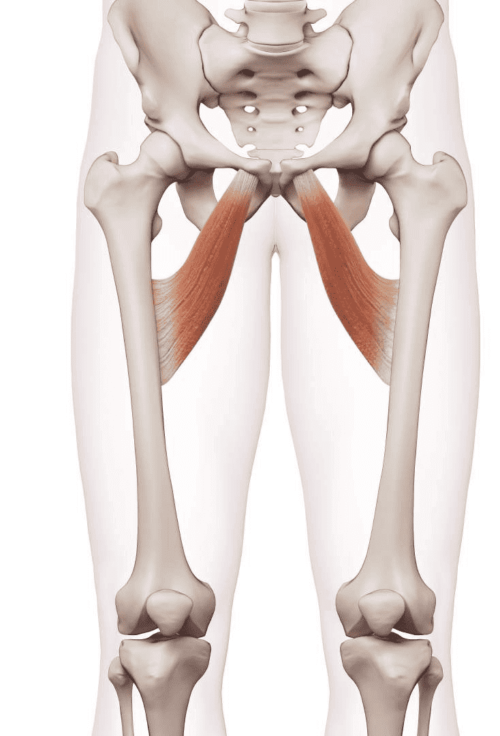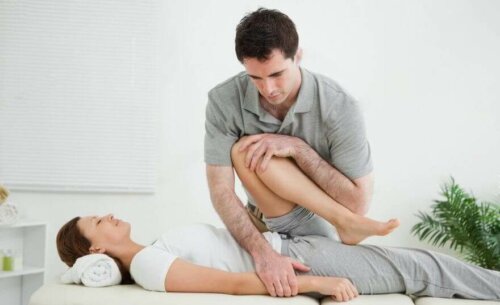Hip Adductor Tendinopathy: What Is It and What Are Its Symptoms?

Adductors are a very important muscle located on the inner side of the thighs. If you’ve ever been to a gym, you’ve probably come across a machine to work them out. However, in some cases, due to overexertion, you might end up suffering from hip adductor tendinopathy.
If you perform an exercise incorrectly or abruptly, it can cause you to suffer a hip adductor tendinopathy, as indicated in the article Proximal hamstring tendon avulsion: surgical treatment in high-performance athletes. Case study.
For this reason, it’s a fairly common injury in athletes. Keep reading to learn what characteristics hip tendinopathy has and the symptoms that identify it.
Athlete’s tendinopathy or pubalgia
There are two ways to refer to this problem: hip adductor tendinopathy or pubalgia. Also, since the injury is to the adductors, it is usually classified as low pubalgia.
The reason for this term is that this tendinopathy shows the presence of discomfort in the area of the adductors, groin, and pubic parts, and can extend to the lower abdomen as indicated in the article Groin pain: differential diagnosis.

Hip adductor tendinopathy usually appears due to intensive daily training. For this reason, as indicated in the article we mentioned above, it’s common in athletes who practice activities such as soccer, rugby, weightlifting, or cycling.
For this reason, it’s important to know how to identify it when it appears in order to take the appropriate measures and recover quickly.
Symptoms of hip adductor tendinopathy
The main symptom of pubalgia or adductor tendinopathy is pain in the inner thighs. But, this pain, as we mentioned previously, can spread to the lower abdomen. Let’s see how this symptom evolves and when it appears:
- Warning about tendinopathy: At the beginning of the injury you’ll feel pain on the inner side of the thigh or lower abdomen after you exercise, that is, during the rest period.
- Aggravation of the injury: Over several days, this pain can spread to the groin area and begins to appear during training.
- Continuous pain: If you haven’t started any treatment to resolve it, the pain becomes continuous and unbearable. Whether you’re resting or moving, the pain doesn’t go away.
At the first sign of pain in the mentioned area it’s important that you go to a specialist. The reason is that hip adductor tendinopathy can significantly affect your quality of life.
Adductor stretches will be almost impossible to do because of the pain and you might get to the point of being unable to cross your legs.
Treatment for adductor tendinopathy

The treatment for hip adductor tendinopathy depends on the degree of the injury. For this reason, the sooner you go to the doctor, the less aggressive the treatment will be. Let’s take a look at some possibilities:
- Anti-inflammatory drugs: These are recommended together with rest and some stretches that allow you to release tension in the area. You can do this when the tendinopathy has just happened and doesn’t affect your quality of life yet.
- Physiotherapy: This complements the above treatment and, if you feel pain while exercising, it may be a good idea to go to physiotherapy where they’ll carry out a program to treat the injury, and correct what has caused it.
- Surgery: This is the last option for when the injury is already too serious and there’s a rupture and chronic distention in the adductor area. This may be the reason why the pain is continuous.
Have you ever been diagnosed with hip adductor tendinopathy? If you practice some of the sports we mentioned, we hope that you’ll be able to correct any habits that can lead you to suffer this type of injury. Remember to always stretch after exercising to relax your muscles.
Sometimes we don’t pay much attention to the adductor muscles. However, they’re very important and we use them all the time without realizing it. We recommend that if you feel pain in the area, don’t wait for it to get worse and put yourself in the hands of a professional as soon as possible.
All cited sources were thoroughly reviewed by our team to ensure their quality, reliability, currency, and validity. The bibliography of this article was considered reliable and of academic or scientific accuracy.
- Gal, C. (2001). La pubalgia: prevención y tratamiento. Editorial Paidotribo.
- Fuentes-Nucamendi, M. A., Carrillo-Muñiz, H., Bonfil-Ojeda, J. R., & Frías-Austria, R. (2011). Dolores de crecimiento. Régimen simplificado de tratamiento. Acta Ortopédica Mexicana, 25(2), 79-86.
- Olivera, G., Holgado, M. S., & Cabello, J. (2001). Lesiones deportivas frecuentes en atención primaria. FMC-Formación Médica Continuada en Atención Primaria, 8(5), 307-320.
- Sohier, R. (2009). Fisioterapia Analítica de la Articulación de la Cadera: Bases, técnicas y tratamientos diferenciales. Ed. Médica Panamericana.
This text is provided for informational purposes only and does not replace consultation with a professional. If in doubt, consult your specialist.








